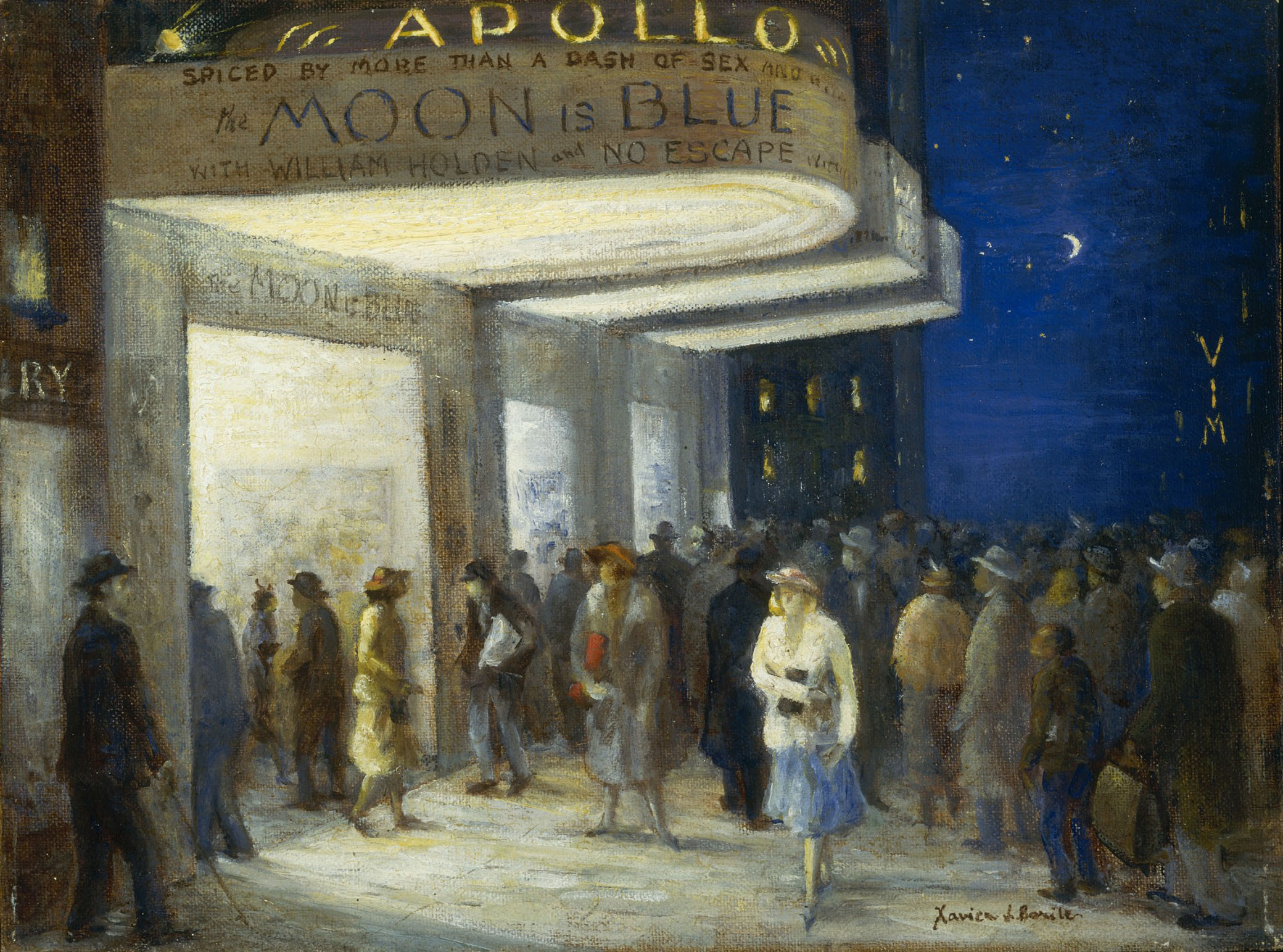
42nd St. Nocturne, by Xavier J. Barile, 1953. Smithsonian American Art Museum, gift of Xavier J. Barile, 1979.
• “A history of the abortion as an argument, and how that argument has influenced American politics over the past half-century.” (The Nation)
• “Are the Benin Bronzes made from German brass—and does it matter?” (Atlas Obscura)
• The history of trade between ancient Rome and India. (New York Review of Books)
• The role of women in the Crusades. (London Review of Books)
• “Few genres are more desperately tied to the tracks of their times than comedy. It’s still enjoyable to see Abbott and Costello joust over a linguistic misunderstanding, but an act such ‘Who’s on First?’ was much funnier in 1938, when audiences knew that it was mocking the nicknames of popular baseball players. Humor tends to wilt through the decades; what was once a bite becomes a sloppy kiss. Not so with Preston Sturges.” (The New Yorker)
• The story of one building on East 7th Street in Manhattan. (Places Journal)
• “Human hair recovered in a Mediterranean island cave has yielded Europe’s oldest direct evidence of people taking hallucinogenic drugs, researchers say.” (Science News)
• This week in obituaries: Ryuichi Sakamoto, Klaus Teuber, Mimi Sheraton, Kwame Brathwaite, Beverley Lawrence Beech, Raghavan Iyer, Virginia Norwood, Peterson Zah, Seymour Stein, Connie Martinson, Suzanne Rheinstein, Margot Stern Strom, Brian Moser, Neal Boenzi, Edward MacMahon, Nigel Lawson, Piero Gilardi, Emahoy Tsegué-Maryam Guèbrou, and Bing Newcomb.